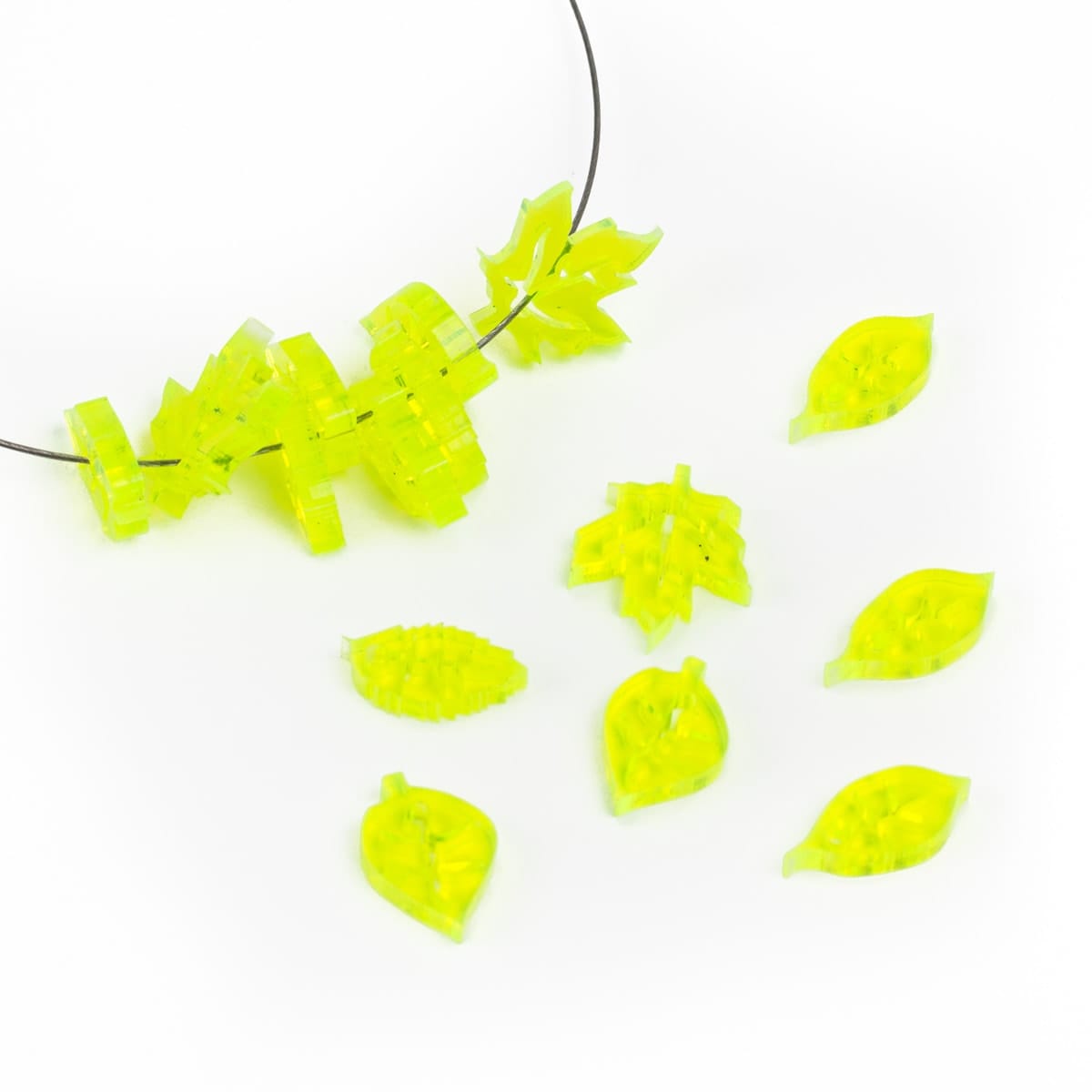Neon Green Translucent Acrylic
A cast thermoplastic resin, acrylic is more stiff & brittle than plastics such as acetates, polycarbonates or vinyls. It is 17 times stronger than glass with excellent resistance to UV damage.
Same day turnaround
Design specifications
Maximum sheet size
31.1 x 15.1in
Kerf width
0.01in
Minimum thickness
0.09in
Maximum thickness
0.14in
Minimum overall part
0.24in
Minimum feature size
0.04in
Minimum engraving detail
0.04in
Mechanical properties
Ultimate tensile strength
70 MPa
Yield strength
70 MPa
Young's modulus
2.90 GPa
Elongation at break
8 %
Hardness
96 HNC
Physical properties
Corrosion resistance
Moderate
Magnetism
No
UV resistance
Good
Density
1.18 g/cm3
Electrical properties
Electrical resistivity
14-16 x 10^15 Ohm.cm
Post treatments
Affixable Properties
Chemical, Mechanical
Thermal properties
Maximum service temperature
60 – 90 °C
Thermal expansion coefficient
65 µm/m-°C
Thermal conductivity
0.19 - 0.2 W/(m⋅°C)
